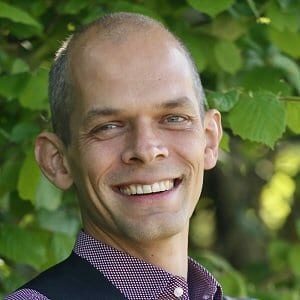
The importance of playgrounds for children’s active outdoor play
Abstract Overview
The importance of playgrounds for children’s active outdoor play
Purpose: The purpose of this symposium is to present an overview of the importance of playgrounds for children’s active outdoor play
Description: Active outdoor play is important for children’s health and development, and playgrounds can provide good places for play. But how do we create good playgrounds in public open spaces, early childhood education and care (ECEC) and schools, that children like to use for active outdoor play? What works, for which type of children, in which context?
In this symposium, four presentations from the United States, Australia and Denmark will shed light on the importance of playgrounds in different settings for children’s active outdoor play. Furthermore, the presentations will include multiple novel methods to measure active outdoor play, and will highlight the importance of engaging children and other stakeholders in the development of new playgrounds.
Together, the presentations will provide valuable information that can help policy makers and city planners prioritize investing in the right playgrounds, for the right context.
Chair: Jasper Schipperijn, World Playground Research Institute, University of Southern Denmark
Presenter 1: Hayley Christian, Telethon Kids Institute, Perth, Australia
Presenter 2: Deborah Salvo, The University of Texas at Austin, Austin, USA
Presenter 3: Charlotte Pawlowski, World Playground Research Institute, University of Southern Denmark
Presenter 4: Aaron Hipp, North Carolina State University, Raleigh, USA
Discussant/moderator: Jasper Schipperijn, World Playground Research Institute, University of Southern Denmark
Presentation 1:
Designing play spaces to promote preschoolers physical activity at early childhood education and care (ECEC)
Authors: Hayley Christian1,2, Jasper Schipperijn3, Pulan Bai1,2, Stewart Trost4
1Telethon Kids Institute, The University of Western Australia, Perth, Australia
2School of Population and Global Health, The University of Western Australia, Perth, Australia
3World Playground Research Institute, University of Southern Denmark, Odense Denmark
4School of Human Movement and Nutrition Sciences, University of Queensland, Brisbane, Australia
Background: ECEC is an important setting to promote preschooler physical activity. The outdoor physical environment has significant potential to influence preschoolers’ physical activity while attending ECEC. Few interventions or studies using device-based measures of children’s physical activity and the ECEC physical environment have been undertaken.
Purpose: Summarize findings from multiple PLAYCE cohort sub-studies investigating the impact of the ECEC outdoor physical environment on young children’s physical activity.
Methods: Wave 1 findings from the ‘Play Spaces and Environments for Children’s Physical Activity’ (PLAYCE) cohort study will be presented and summarised. In wave 1, 1596 preschoolers aged 2–5 years and their parents were recruited from 104 ECEC services across Perth, Western Australia. Physical activity was measured by 7-day accelerometry and GPS. The Environment and Policy Assessment and Observation (EPAO) Instrument and Nearmap aerial imagery captured the ECEC physical environment.
Results: Sandboxes, portable play equipment (balls, slides, floor play equipment) and natural grassed areas were positively associated with preschooler physical activity. The addition of new portable equipment including balls, slides, twirling and floor play equipment resulted in intervention children being more active at follow-up. Spatial data confirmed physical activity hot spots were most common in outdoor open areas and areas with fixed play equipment and natural features.
Conclusions: Fixed and portable play equipment, natural features, and the amount of running space in ECEC outdoor areas and its location in relation to other play areas are important for facilitating physical activity in preschoolers.
Practical implications: Since few preschoolers meet daily energetic play recommendations while at ECEC,
the findings can support ECEC providers to optimize outdoor physical environments and encourage more active play among preschoolers.
Funding: The PLAYCE Study was funded by the Western Australian Health Promotion Foundation (Healthway #32018). HC is supported by an Australian National Heart Foundation Future Leader Fellowship (#102549).
Presentation 2:
Identifying priorities for improving playground access equity in Austin, Texas, USA: a mixed-methods, community-engaged study
Authors: Deborah Salvo,1 Case Garza,1 Eugen Resendiz1
1 People, Health and Place Lab, Department of Kinesiology and Health Education, The University of Texas at Austin. Austin, Texas, USA
Background: Parks and playgrounds are critical built environment resources for children’s health and development. For many children, playgrounds are the only place for physical activity practice after school, on weekends, and/or during non-school months.
Purpose: To characterize playground access (in)equity in Austin, Texas, USA; and to engage key stakeholders and community members for identifying priorities for playground improvements.
Methods: This study uses a mixed-methods approach. Using GIS, we are mapping all playgrounds in Austin, Texas, and identifying neighbourhoods with high versus low playground availability. We will explore differences in playground access by underlying sociodemographic characteristics of neighbourhoods (income, race/ethnic composition of residents) to diagnose inequities. We are further collecting audit-based and imagery (photography) data in 8 low-income neighbourhoods with high proportions of minoritized residents, to assess the current upkeep/quality of playgrounds in these areas. Additionally, a systematic organizational mapping exercise is underway to identify key people, groups, organizations, and agencies with an interest or influence on playground improvement, renovations, maintenance, and programming. Finally, we are conducting 2-5 key stakeholder/community-member semi-structured interviews with representatives of key sectors (parks and recreation, public safety, environmental protection, placemaking community-based groups), to identify priorities for playground improvements.
Results: Data collection is underway, and will finalize in early May, 2023. Final results will be presented at ISPAH 2024.
Conclusions: Ensuring equity in access to playgrounds is critical for promoting healthy development in children, and for achieving physical activity and health equity.
Practical implications: Using a data-driven approach to identify high need areas, and engaging key stakeholders, including key public sectors are critical approaches for informing the design and implementation of contextually-responsive programs to improve playground access and utilization in high need areas.
Funding: This study was partially funded by the World Playground Research Institute, University of Southern Denmark.
Presentation 3:
How to design activating school playgrounds for 9-12 year-olds
Authors: Charlotte Skau Pawlowski¹, Thea Toft Amholt2, Jasper Schipperijn¹
1World Playground Research Institute, University of Southern Denmark, Odense Denmark
2Center for Clinical Research and Prevention, Frederiksberg Hospital, Frederiksberg, Denmark
Background: School playgrounds are a unique place to promote physical activity for children. However, physical activity on school playgrounds decreases when children get older. Several of our studies have shown that there is a relation between school playground design and physical activity among older schoolchildren.
Purpose: The aim was to compile our evidence and develop recommendations for designing activating school playgrounds for 9-12 year-olds.
Methods: We have compiled our evidence from two school playground studies in Denmark conducted between 2016-2022. In each of the mixed-methods studies, we looked at the relation between physical activity among 9-12-year-olds and school playground design. Using combined accelerometer and GPS data, we identified which type of schoolyard features were used for physical activity. Using go-along interviews, we identified six types of children with different activity preferences. Combining data, we identified which schoolyard features were used by which type of children.
Results: To stimulate active use by 9-12-year-olds, school playgrounds should contain a variety of features such as secluded social areas where they can hang out with each other, areas with age-appropriate physical challenges such as high climbing frames that creates a feeling of risk-taking, sports features such as ball game areas, as well as features for non-competitive activities. Finally, it is important that there is a good balance between paved and natural, vegetated surfaces in the schoolyard.
Conclusions and practical implications: If school playgrounds are designed and built with the right features such as secluded hang-out areas, areas with age-appropriate physically challenging features, as well as sports area, and areas for non-competitive activities, 9-12 years-olds will actively use them, which positively influences their total daily physical activity levels.
Funding: This study was funded by KOMPAN, a large international playground company. KOMPAN has not had any influence on the methods, results or conclusion.
Presentation 4:
Child’s Play: What can we learn from AI-based – clustering algorithms?
Authors: J. Aaron Hipp¹, Jae In Oh1, Morgan Hughey2
1North Carolina State University, Raleigh, NC, USA
2College of Charleston, Charleston, SC, USA
Background: The study of playgrounds has traditionally been via observations, though use of GPS and accelerometers are becoming more frequent. Use of monitoring devices provide more nuanced understanding of use of space, intensity of activities, and where current playspaces may be under-activated.
Purpose: We recruited a diverse sample of youth from playgrounds located in economically-disadvantaged neighborhoods to understand activity intensity on playgrounds, attribute preference, and play clusters within and between playground amenities.
Methods: 5 – 10 year olds wore an accelerometer and GPS during a playground visit. Each playground amenity was mapped with a handheld Trimble GPS. GPS and accelerometer data, with 15 second epochs, were joined using HABITUS software. Clusters of play, or play episodes, were created using the ArcGIS density-based clustering algorithm, OPTICS. Clusters were set with a minimum of five consecutive points (1 minute) and maximum distance of 6m between points. OPTICS output provides clusters of play across an individual’s wear-time allowing for the visualization and description of play across time and space.
Results: The dataset included 40,000 15s epochs of playground use from 321 youth. OPTICS identified 1,727 play episodes. The average playground visit included five three-minute episodes of play. 37% of play episodes occurred on playsets, followed by 8% of episodes on swing sets. 43% of play episodes occurred across or between different play areas within playgrounds (e.g., playing on the slide and then running directly to the swings).
Conclusions: Youth play episodes are varied and often between or beyond provided play equipment. Further research is necessary into the layout and design of equipment that best invites active, creative play and incites return visits.
Practical implications: Understanding play episodes on playgrounds can inform the design of specific playground equipment, layout of diverse amenities across a playground, and help activate under-used spaces.
Funding: Robert Wood Johnson Foundation
Additional Authors
Name: Hayley Christian
Affiliation: Telethon Kids Institute, The University of Western Australia
Presenting Author: yes
Name: Deborah Salvo
Affiliation: People, Health and Place Lab, Department of Kinesiology and Health Education, The University of Texas at Austin
Presenting Author: yes
Name: Charlotte Pawlowksi
Affiliation: World Playground Research Institute, University of Southern Denmark
Presenting Author: yes
Name: Aaron Hipp
Affiliation: North Carolina State University
Presenting Author: yes

